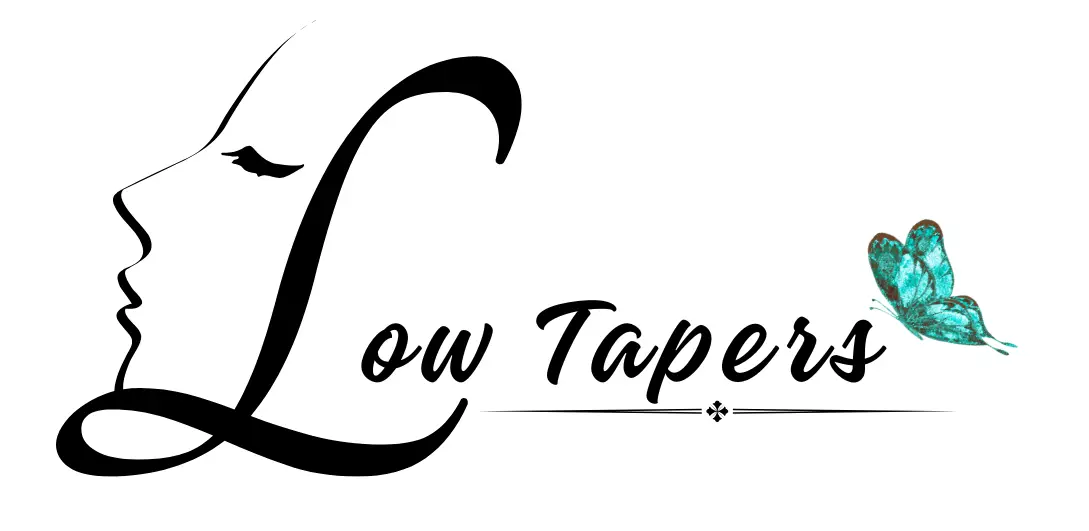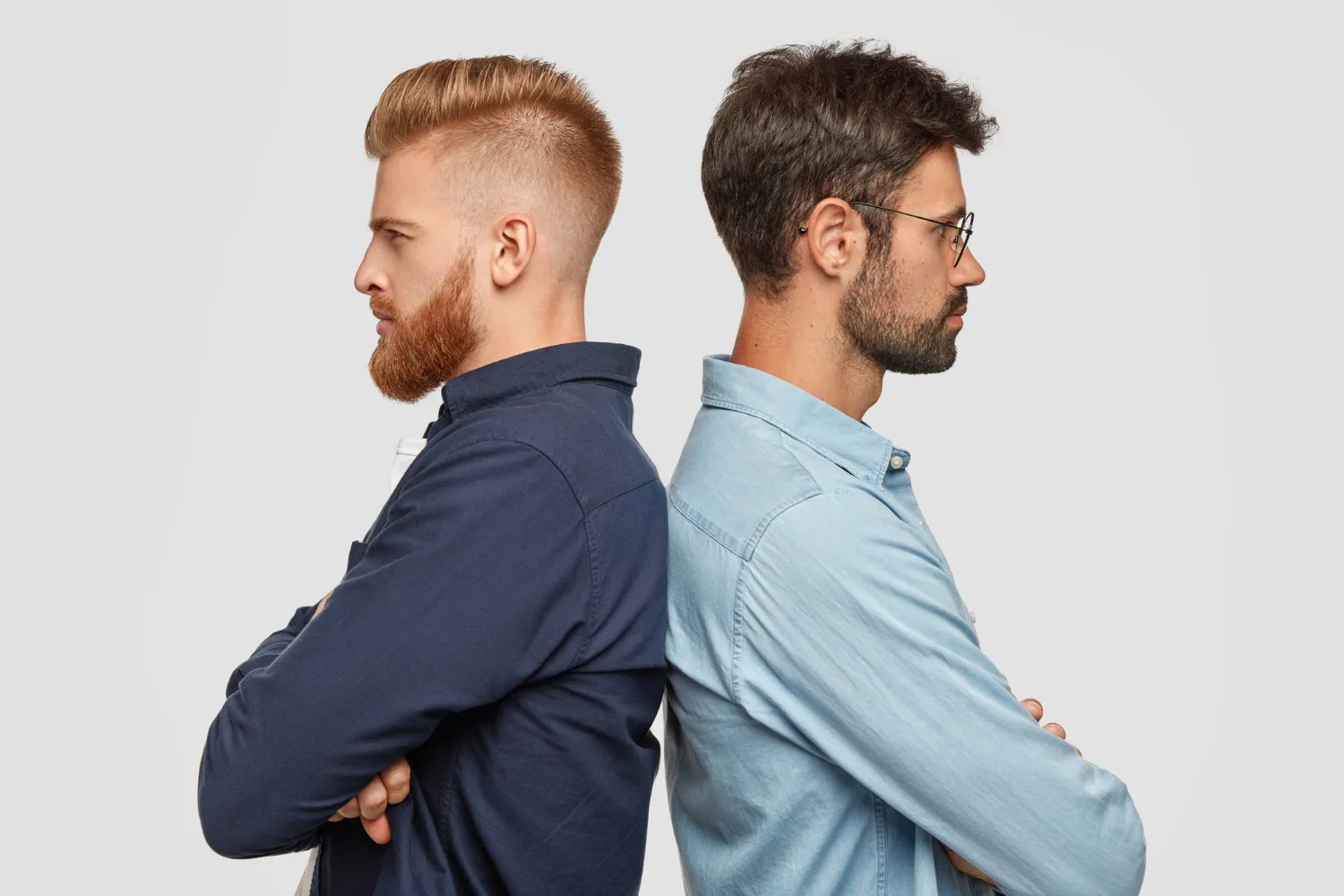
The world of men’s haircuts has evolved dramatically, with fade and taper haircut styles leading the revolution in modern grooming. From trending low taper fads to classic ivy league haircut variations, understanding the nuances between different fade styles can help you achieve the perfect look that matches your personality and lifestyle.
Whether you’re debating between low fade vs high fade options or trying to understand the difference in low fade vs taper techniques, this comprehensive guide covers everything you need to know about today’s most popular men’s hairstyles.
Understanding the Fade Revolution: Low Taper Fads
The Low Taper Fade adds a modern touch, blending the sides and back seamlessly. It’s a trendy and low-maintenance style that works well for men who prefer a more relaxed yet stylish look. The current low taper fads dominating barbershops worldwide represent a shift towards more subtle, professional-friendly variations that maintain style without being overly aggressive.
What Makes Low Taper Fads So Popular?
Current low taper fads focus on:
- Seamless blending techniques
- Professional appearance suitable for all environments
- Easy maintenance and styling
- Versatility across different hair types
- Sharp, subtle looks that work with just about every hair type — from straight to curly, buzzed to textured
The Classic Low Taper Fade Breakdown
The low taper fade remains the foundation of modern men’s grooming. This low-cut taper starts just above the ears and creates a gradual transition that’s both sophisticated and manageable.
Key Characteristics of Low Taper Fade:
- Starts approximately 1 inch above the ears
- Gradual length transition over 2-3 guard sizes
- Maintains substantial hair on the sides
- Blends seamlessly into longer hair on top
- Works with various styling products and techniques
Benefits of Choosing Low Taper Fade:
- Professional Versatility: Perfect for corporate environments
- Low Maintenance: Requires touch-ups every 3-4 weeks
- Universal Appeal: Suits all face shapes and hair types
- Styling Flexibility: Easy to adapt for different occasions
Mastering Low Taper Fade Haircut Techniques
The low taper fade haircut requires precision and skill to achieve the perfect gradient. This fade starts lower than high or mid fades, resulting in a more subtle, refined look.
Professional Execution Steps:
- Initial Length Assessment: Determining starting and ending points
- Guard Selection: Typically using #3, #2, #1, and #0.5 guards
- Blending Technique: Creating smooth transitions between lengths
- Detail Work: Cleaning up edges and perfecting the fade line
- Final Styling: Shaping the top section to complement the fade
Popular Low Taper Fade Haircut Variations:
- Textured Top: Adds movement and modern appeal
- Slicked Back: Classic sophistication with contemporary edges
- Messy Styling: Relaxed, natural finish
- Side Part Integration: Traditional meets modern approach
Exploring Low Taper Styles
Low taper styles encompass a broad range of looks that share the common thread of subtle, gradual transitions. These styles have become increasingly popular due to their adaptability and professional appearance.
Trending Low Taper Styles:
- Low Taper with Textured Crop: Modern, European-inspired styling
- Low Taper Pompadour: Classic height with contemporary sides
- Low Taper Quiff: Elevated front section with clean sides
- Low Taper Buzz: Ultra-short top with tapered sides
- Low Taper with Natural Texture: Embracing hair’s natural patterns
Styling Products for Low Taper Styles:
- Pomades: For sleek, controlled finishes
- Hair Wax: Natural texture and flexibility
- Sea Salt Spray: Volume and beachy texture
- Hair Clay: Matte finish with strong hold
Low Fade vs High Fade: The Ultimate Comparison
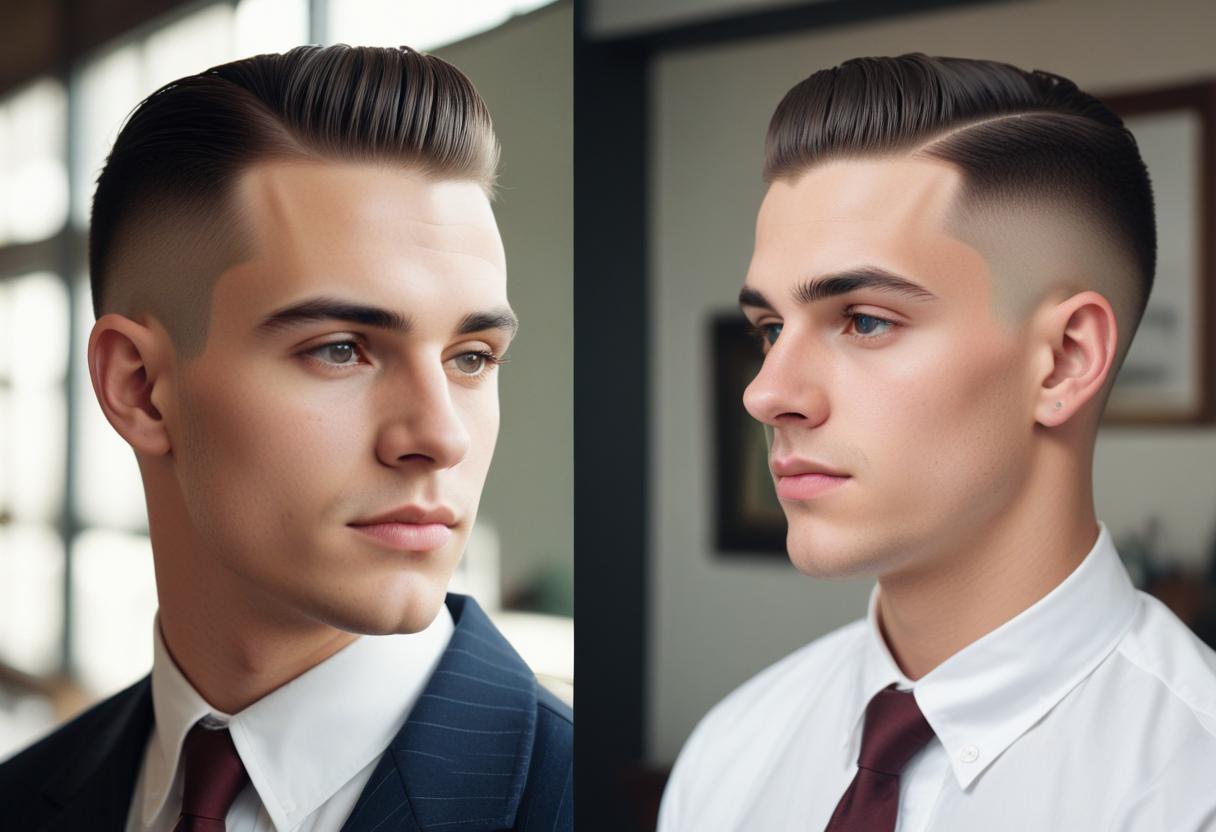
The low fade vs high fade debate is one of the most common discussions in modern barbering. Understanding these differences helps you make informed decisions about your next haircut.
Low Fade Characteristics:
- Starts just above the ears (approximately 1 inch)
- More conservative and workplace-appropriate
- Maintains more hair on the sides
- Easier to grow out gracefully
- Suits men preferring subtle changes
High Fade Features:
- Begins at temple level or higher
- More dramatic and bold appearance
- Shows significant scalp contrast
- Requires more frequent maintenance
- Perfect for statement-making styles
Choosing Between Low and High Fade:
Choose Low Fade If:
- You work in conservative environments
- You prefer subtle, gradual changes
- You want longer time between cuts
- You’re new to fade haircuts
Choose High Fade If:
- You enjoy bold, dramatic styles
- You don’t mind frequent maintenance
- You want maximum contrast
- You have strong facial features to balance
Low Fade vs Taper: Understanding the Differences
The low fade vs taper comparison often confuses clients, as these terms are sometimes used interchangeably. However, there are distinct differences worth understanding.
Taper Characteristics:
- Gradual shortening without skin showing
- Uses scissors and longer guard lengths
- More natural, blended appearance
- Traditional barbering technique
- Suitable for conservative settings
Fade Features:
- Gradual shortening down to skin level
- Uses clippers with various guard sizes
- More modern, dramatic appearance
- Creates sharper contrast lines
- Popular in contemporary styling
Technical Execution Differences:
Taper Technique:
- Primarily scissor work
- Maintains hair length throughout
- Focuses on blending different lengths
- Creates natural-looking transitions
Fade Method:
- Clipper-focused approach
- Reduces hair to skin level
- Sharp contrast between sections
- Modern, precise appearance
Drop Fade or Taper: Modern Variations
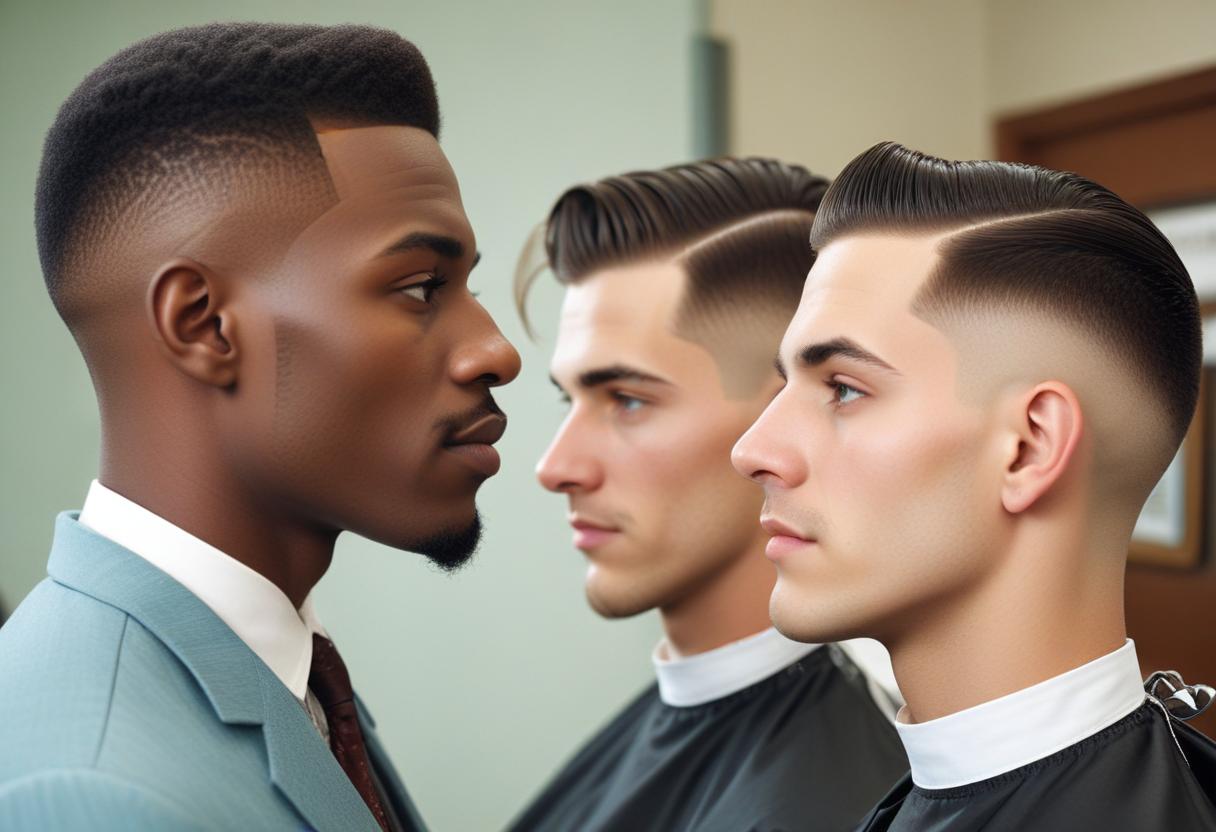
The question of drop fade or taper introduces another dimension to fade haircuts. Drop fades curve around the ears, creating unique silhouettes that complement head shapes differently than traditional straight-line fades.
Drop Fade Benefits:
- The Low Drop Fade enhances the shape of the head by creating a curved fade that dips behind the ears
- More natural following of head contours
- Flattering for various head shapes
- Contemporary, artistic appearance
- Excellent with longer top styles
When to Choose Drop Fade:
- You want a more artistic, curved line
- Your head shape benefits from contouring
- You’re pairing with longer hairstyles on top
- You prefer modern, trendy appearances
When to Choose Traditional Taper:
- You prefer classic, timeless looks
- Your workplace requires conservative styles
- You want the easiest maintenance routine
- You’re unsure about dramatic changes
Mastering Fade and Taper Haircut Combinations
Fade and taper haircut combinations offer the best of both worlds, blending traditional techniques with modern aesthetics. These hybrid approaches create unique looks that satisfy various style preferences.
Popular Combination Techniques:
- High Taper with Low Fade: Gradual taper transitioning to skin fade
- Mid Fade with Taper Blend: Balanced approach for versatile styling
- Textured Taper Fade: Natural texture with clean side tapering
- Disconnected Fade Taper: Contrasting sections for artistic appeal
Benefits of Combination Approaches:
- Maximum customization potential
- Unique, personalized results
- Balances conservative and modern elements
- Accommodates various hair types and textures
The Timeless Low Fade
The low fade stands as the most versatile option in modern men’s grooming. Its popularity stems from the perfect balance between style and practicality, making it suitable for various lifestyles and preferences.
Why Low Fade Works:
- Universally flattering across face shapes
- Professional appearance for all industries
- Easy daily styling and maintenance
- Complements various hair textures
- Transitions well as hair grows out
Low Fade Styling Options:
- Slicked Back Low Fade: Professional sophistication
- Textured Low Fade: Modern, casual appeal
- Low Fade with Hard Part: Sharp, defined styling
- Messy Low Fade: Relaxed, natural finish
- Low Fade Pompadour: Classic meets contemporary
Maintenance Schedule for Low Fade:
- Week 1-2: Fresh, sharp appearance
- Week 3-4: Still clean but slightly grown
- Week 5-6: Time for professional touch-up
- Styling adjustments: Adapt products as hair grows
The Distinguished Ivy League Haircut
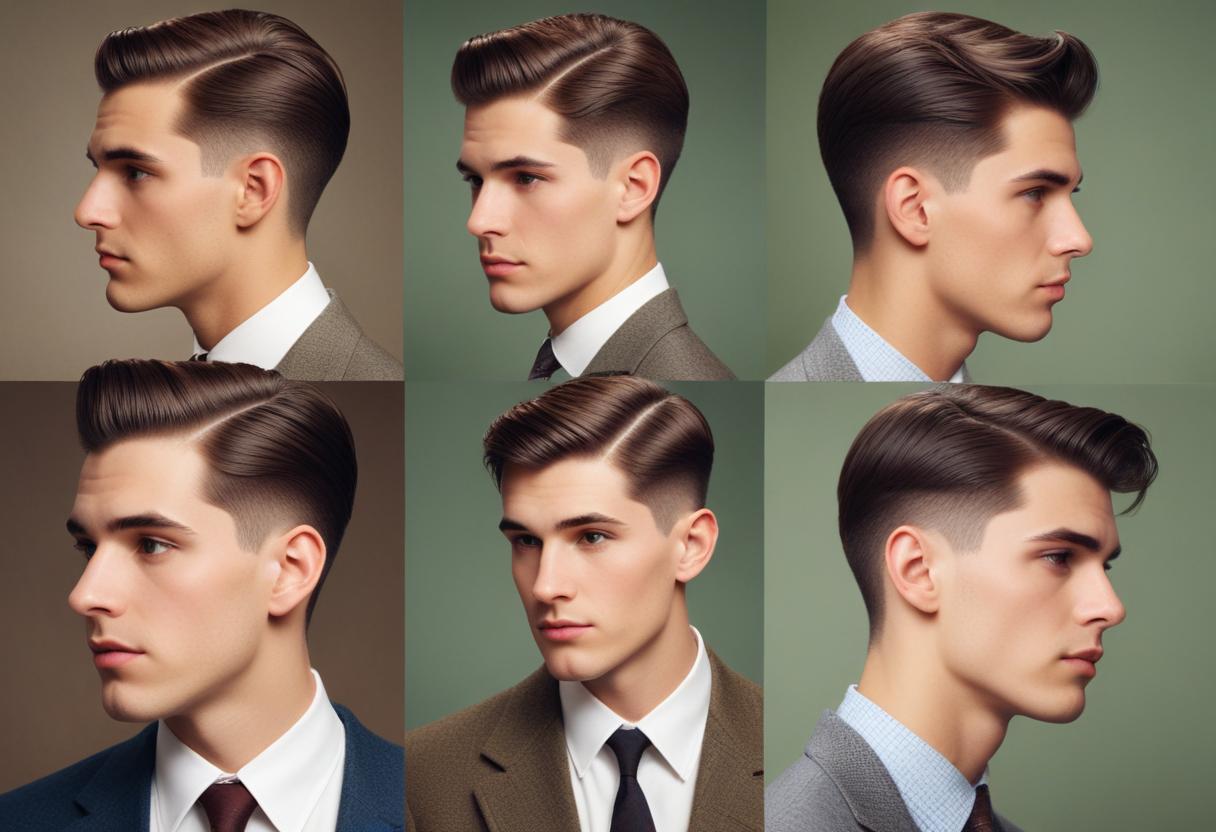
The ivy league haircut represents timeless American style, combining elements of traditional barbering with sophisticated styling. This classic cut works beautifully with modern fade techniques.
Ivy League Haircut Characteristics:
- Longer length on top (typically 1-3 inches)
- Side part or natural styling direction
- Tapered sides and back
- Clean, professional appearance
- Versatile styling options
Modern Ivy League Variations:
- Ivy League with Low Fade: Contemporary update to classic style
- Textured Ivy League: Modern movement and natural finish
- Ivy League Pompadour: Elevated height with sophisticated sides
- Messy Ivy League: Relaxed, casual interpretation
Styling the Ivy League Haircut:
Products Needed:
- Quality pomade or hair cream
- Fine-tooth comb
- Blow dryer for volume (optional)
- Light-hold hairspray for finishing
Styling Steps:
- Start with slightly damp hair
- Apply pomade evenly through hair
- Create desired part with comb
- Style top section in preferred direction
- Finish with light hairspray if needed
Professional vs. Casual Ivy League Styling:
Professional Approach:
- Clean, precise side part
- Sleek finish with pomade
- Conservative length and styling
- Minimal texture or movement
Casual Interpretation:
- Natural, tousled texture
- Looser styling direction
- Matte finish products
- Slightly longer length options
Choosing Your Perfect Style
Selecting between these various options depends on several factors:
Consider Your Lifestyle:
- Professional Requirements: Conservative industries favor subtle tapers and ivy league styles
- Personal Style: Bold personalities might prefer high fades, while subtle preferences lean toward low tapers
- Maintenance Commitment: Busy schedules benefit from low-maintenance options like low fades
- Hair Type: Curly hair works differently with fades than straight hair
Face Shape Considerations:
- Round Faces: Benefit from height on top with subtle side fades
- Square Faces: Work well with most fade variations
- Long Faces: Suit wider styling with moderate fade heights
- Oval Faces: Most versatile, works with any option
Frequently Asked Questions (FAQs)
What’s the difference between current low taper fads and classic cuts?
Current low taper fads focus on seamless blending and modern techniques, while classic cuts relied more on scissor work and traditional methods. Modern fads emphasize precision clipper work and contemporary styling products.
How do I decide between low fade vs high fade for my lifestyle?
Consider your workplace dress code, maintenance availability, and personal style preferences. Low fade vs high fade choice should align with how dramatic you want the change and how often you can visit the barber.
What’s the main difference in low fade vs taper techniques?
Low fade vs taper differs primarily in the final result – taper maintains some hair length throughout, while fade reduces to skin level. Tapers use more scissor work, while fades rely heavily on clipper techniques.
Should I choose drop fade or taper for my head shape?
Drop fade or taper choice depends on your head contours and desired aesthetic. Drop fades follow natural head curves and work well with artistic styles, while tapers offer more traditional, conservative appearances.
How often do fade and taper haircut combinations need maintenance?
Fade and taper haircut combinations typically require touch-ups every 2-3 weeks to maintain sharp lines. The exact timing depends on your hair growth rate and how precise you want the style to remain.
Is a low fade suitable for professional environments?
Yes, a low fade is perfectly appropriate for professional settings. Its subtle nature and clean appearance make it one of the most workplace-friendly modern haircuts available.
How long does an ivy league haircut take to style daily?
An ivy league haircut typically requires 2-5 minutes of daily styling, depending on desired finish and hair type. The classic nature of the cut makes it relatively quick and easy to manage.
What products work best for maintaining modern fade styles?
Quality pomades, hair wax, and texturizing sprays work best for modern fade styles. Choose products based on desired finish – pomades for sleek looks, wax for natural texture, and sprays for volume.
Can I transition from a high fade to low taper styles?
Yes, transitioning from high to low taper styles is possible but may require a few weeks of growth. Your barber can help plan the transition to maintain a neat appearance throughout the process.
Which style is best for first-time fade clients?
Low taper fade options are ideal for first-time clients because they’re subtle, professional, and easier to adapt to. You can always go shorter or more dramatic in future appointments.
Conclusion
The evolution from traditional cuts to modern fade and taper haircut styles represents more than just changing trends – it reflects our desire for personalized, versatile grooming solutions. Whether you’re drawn to the latest low taper fads, classic low taper fade reliability, or sophisticated ivy league haircut tradition, the key is finding a style that complements your lifestyle, face shape, and personal aesthetic.
Understanding the differences between low fade vs high fade, low fade vs taper, and drop fade or taper options empowers you to make informed decisions about your next haircut. Remember that the best style is one that makes you feel confident and suits your daily routine.
Consider consulting with an experienced barber who can assess your hair type, face shape, and lifestyle needs to recommend the perfect combination of these classic and contemporary techniques. The right fade and taper haircut can transform not just your appearance, but your entire approach to daily grooming and personal style.
Ready to explore more men’s grooming options? Check out our guides on seasonal styling, product recommendations, and advanced barbering techniques to keep your look fresh and contemporary.
